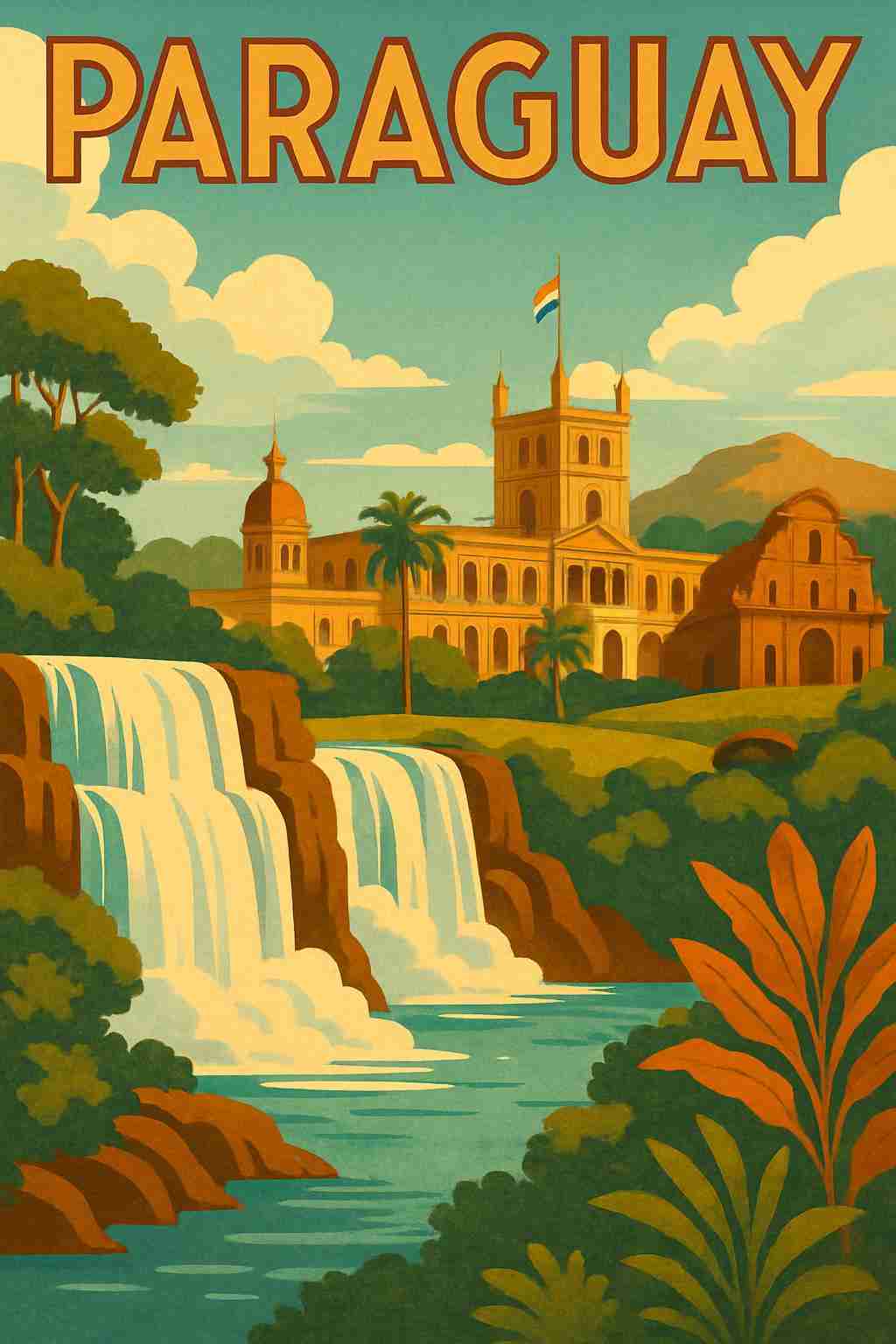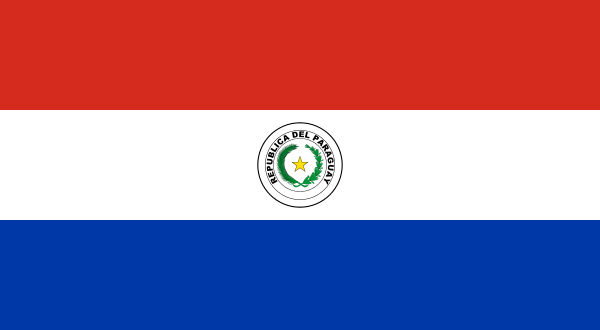Currency in Paraguay: PYG Send & Spend FX Guide
 Resources for Expats, Travelers and Entrepreneurs Navigating Life and Trade in Paraguay with the Paraguayan guarani.
Resources for Expats, Travelers and Entrepreneurs Navigating Life and Trade in Paraguay with the Paraguayan guarani.

What's in this Paraguay currency guide?
What currency is used in Paraguay?
The official currency of Paraguay (country code: PY) is the Paraguayan guarani, with symbol Gs and currency code PYG.
What is a good Paraguayan guarani exchange rate?
The BestExchangeRates.com currency comparison table below helps you see the total cost of your currency transaction by showing the exchange rates offered by different providers. It also makes it easy to spot potential savings from market-leading FX services compared to bank rates.
To see a full list of rates, enter your transaction type, currencies and amount then click ‘GET RATES’:
Loading rates...
|
|
|
Good things to know about the Paraguayan guarani
The Paraguayan guarani (PYG) is the official currency of Paraguay, a country located in South America. Here are a few things to know about the Paraguayan guarani:
- The Paraguayan guarani is abbreviated as PYG and is divided into 100 céntimos.
- The Central Bank of Paraguay is responsible for issuing and regulating the Paraguayan guarani.
- The exchange rate for the Paraguayan guarani is determined by supply and demand in the foreign exchange market.
- Paraguay has a large, diversified economy that is heavily reliant on agricultural exports, including soybeans, wheat, and corn. The country is also a major producer of hydroelectric power and has a growing manufacturing sector.
- The Paraguayan guarani has experienced significant depreciation in recent years due to economic challenges such as high inflation and a large trade deficit. In addition, Paraguay has faced political instability and conflict, which have also had an impact on the value of the Paraguayan guarani.
For more PYG information check out our selection of Paraguayan guarani news and guides.
Frequently Asked Questions
What currency should I use in Paraguay?
The domestic currency in Paraguay is the Paraguayan guarani.
What is the Paraguayan guarani currency code and symbol?
The three letter currency code for the Paraguayan guarani is PYG — symbol is Gs.
Which countries use the Paraguayan guarani?
It is the domestic currency in Paraguay.
Is the Paraguayan guarani a closed currency?
No, the Paraguayan guarani is freely available and convertible. See guide: What is a closed currency?
What are equivalent amounts of USD and PYG?
Here are some popular conversion amounts for USD to PYG (US dollar to Paraguayan guarani)*.
| USD | PYG |
|---|
| USD | PYG |
|---|---|
| $ 0.1490 | Gs 1,000 |
| $ 0.7450 | Gs 5,000 |
| $ 2.9800 | Gs 20,000 |
| $ 14.90 | Gs 100,000 |
More amounts
*Converted at the current USDPYG interbank exchange rate. Calculate actual payout amounts for Send Money and Travel Money exchange rates.

Travel money for Paraguay
Using Wise for Paraguayan guarani travel money is a smart choice for savvy travelers. With its competitive exchange rates and low fees, Wise allows you to convert and manage multiple currencies effortlessly.
Be careful when using your own bank's Debit/Credit Card, as your bank may also charge an extra 3% as an “Overseas Transaction Charge” plus “Overseas ATM” fees for withdrawing cash on top of the standard Visa/Mastercard 2.5% from market mid-rate.
For card purchases, if you are offered a choice of currencies always select to Pay in Paraguayan guarani otherwise you will typically get much worst dynamic currency conversion (DCC) exchange rates.
If you really want Paraguayan guarani cash before departure, you can save money by ordering online. You generally get better rates and can pick up the PYG cash locally or even on travel day at the airport.
Paraguay: Travel Guide
Traveling to Paraguay requires careful financial planning to ensure a smooth and cost-effective experience. Here's a comprehensive guide to help you navigate currency considerations and manage your money effectively during your visit.

Paraguay is the forgotten part of South America. Ignored by travellers for so long, the country has never built up its tourist infrastructure. But that is now its greatest charm. This is a country where you can truly get off the beaten track and experience the local culture. There aren’t a lot of large ‘sights’ in Paraguay for the average traveller. That’s one of the reasons why there hasn’t been a large number of tourists. But, as I’ll explain, there are some wonderful things to do which are much more enriching than the average landmark tours of other countries.
What currency is used in Paraguay?
The currency of Paraguay is the guarani (PYG). Banks in Paraguay are mainly found in the Asuncion and Villa Morra areas, with only 35 banks in total in the country. If traveling to rural areas, you should take cash with you from the capital, as credit card usage for purchases is not common. Most banks in Paraguay have limited opening hours, between 7:30 a.m. and 11:00 a.m. on weekdays, although they generally have a 24-hour ATM attached.
Getting around in Paraguay.
By far, bus travel is the most common form of public transport in Paraguay. Urban buses have routes around the big cities, although they are long so it can take a while to reach your final destination. Buses vary in shape and size, although generally they are old, mid-sized vehicles which don’t offer the most comfortable ride. Long distance buses in general are large and comfortable, although you can still expect a bumpy ride on some journeys over seldom maintained roads. Even though Paraguay was the first country in South America to have an operating railroad in the 1800s, as of 2006 there are no working regular passenger services. Almost all of the 235 mile railroad is disused.
Although a landlocked country, Paraguay has over 1,900 miles of inland waterways, so it is possible that you may find yourself on a boat journey at some point in your trip. The Paraguay River, the huge waterway that divides the country in two, can be traveled with Crucero Paraguay who organizes scheduled tours departing from Asuncion. Self-driving around Paraguay is not particularly recommended since many of the long-distance roads are only one lane and in poor condition.
What language is spoken in Paraguay?
Paraguay has two official languages: Spanish and Guarani. Guarani is the native language of the indigenous people and has stood the test of time, even after many centuries of Spanish colonialism. It is largely spoken in rural areas. About 90 percent of Paraguayans speak Guarani. Spanish is spoken in the cities and urban areas although in the countryside, many people speak Spanish as a second language. There is a dialect called Jopara which is a mixture of Spanish and Guarani. English is spoken by most hotel and tour company staff. The cities in Paraguay are not the country’s most interesting places but it is inevitable that you will pass through a few of them if you are travelling around the country.

Everyday Costs in in Paraguay
How much does it really cost to live, work, or travel in Paraguay? Here's what to expect for daily expenses and expat living.
Traveling to Paraguay: Budgeting for Your Stay
If you're planning a week-long mid-range stay in Paraguay (ISO code: PY), you'll want to budget approximately $500 to $700 for a comfortable experience. This estimate will cover decent dining, transportation, and accommodation. Here's a look at some typical daily expenses in local currency, the Paraguayan guarani (PYG):
- 🍽️ Meal at a local restaurant: 50,000 PYG
- ☕ Coffee: 10,000 PYG
- 🚍 Public transport fare: 2,500 PYG
- 📱 Prepaid SIM card: 40,000 PYG
- 🏨 Budget hotel or Airbnb: 150,000 PYG per night
Overall, Paraguay is known to be quite affordable compared to many Western nations, making it a cheap destination for travelers. When compared to the United States, daily expenses in Paraguay can be around 50-70% lower, while costs are also significantly less than those in Australia, where dining out and lodging often come with a premium price tag.
Insights for Expats Living in Paraguay
For expats considering a long-term stay in Paraguay, monthly living costs can range from 2,000,000 to 3,000,000 PYG, depending on lifestyle choices. This budget typically includes rent, utilities, and daily expenses. If you are planning to live there, it's essential to familiarize yourself with local banking options. Many shops and restaurants accept cards, but cash is still widely used, especially in rural areas. You can send and receive money through local banks, but for better exchange rates and lower fees, services like Wise or OFX are recommended.
When it comes to exchanging money, it's often better to avoid exchanging cash at airports or tourist spots, where the rates can be less favorable. Instead, you may consider using online transfer services for better rates and convenience, although local ATMs can also provide decent rates, especially when withdrawing directly in PYG.
USD/PYG Market Data
The below interactive chart displays the USD/PYG change and UP📈 DOWN📉 trends over the past 1 Year.
Send Money to Paraguay - Best Rates
To get a good (and fair) exchange rate when sending money to Paraguay you need to find and compare exchange rates for International Money Transfers (IMTs).
The available FX rates for sending money abroad can be very different to the mid-market (wholesale) rate which you see reported online and in the News.
You should especially compare your own bank's exchange rates to those available from Money Transfer specialists to see how much you can save - we make that calculation easy in the below table.
Get a better deal for foreign transfers to Paraguay
When sending money to Paraguay it’s important to compare your bank’s rates & fees with those we have negotiated with our partner money transfer providers. To get a better deal you should follow these 4 simple steps :
- Open an account with a BER reviewed FX provider (id docs may be required)
- You specify the local or Paraguayan guarani amount you want to transfer
- Make a local currency domestic transfer for the requested amount to the provider's bank account in your country
- Once your funds are received by the provider the converted PYG amount will be transfered to the recipient account you specify in Paraguay.
Use the above calculator to compare the exchange rates of FX specialist providers rates versus your bank's standard rates you can hopefully save around 5% and maybe more - end result is more Paraguayan guarani deposited into the recipient bank account and less margins and fees kept by the banks!
